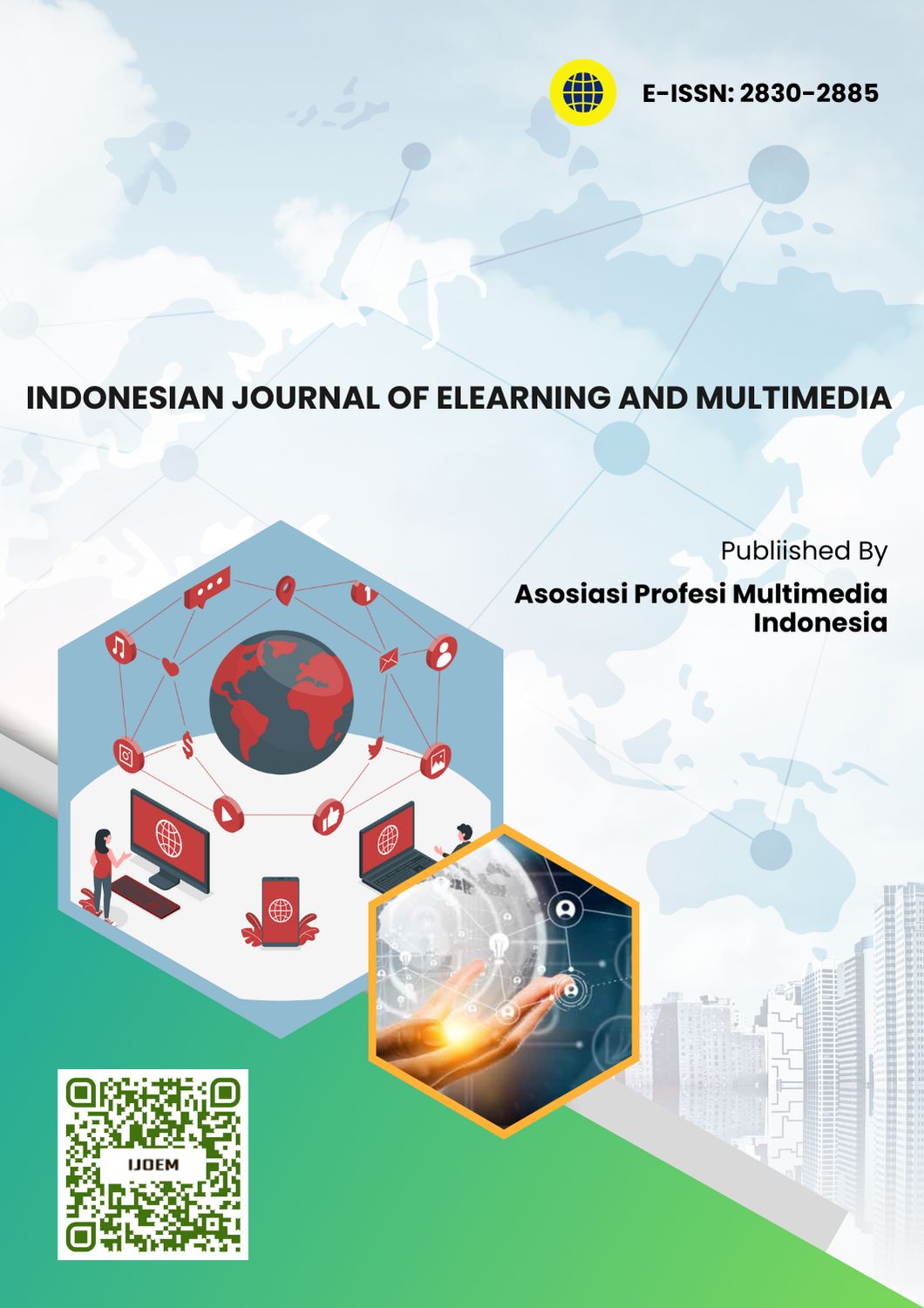Evaluating the Functional Efficiency Improvement of RSUD dr. Loekmono Hadi Kudus Website Redesign Using Black Box Testing
Main Article Content
Abstract
Background: Hospital websites are vital for public health information access. The previous RSUD dr. Loekmono Hadi Kudus website had significant usability and functional issues, with many features being non-operational, necessitating a redesign for better quality and user engagement.
Aims: This research assesses the improvement in functional efficiency of the RSUD dr. Loekmono Hadi Kudus website post-redesign, focusing on a quantitative comparison of functional integrity between the old and new versions through Black Box testing.
Methods: The website redesign followed the Design Thinking approach, focusing on understanding user needs and developing empathetic, user-centered solutions. Functional efficiency was evaluated through Black Box testing on ten core features representing the hospital website’s main functionalities: (1) homepage navigation links, (2) automatic banner slide, (3) manual banner navigation buttons, (4) “About Us” dropdown, (5) main “Doctor” menu, (6) doctor search feature, (7) “Doctor Schedule” access, (8) “Facilities” dropdown, (9) detailed facility information access, and (10) “Service Tariff” dropdown for transparent service fee information.
Result: Black Box testing showed a profound improvement in functional efficiency. The redesigned website achieved 100% functional validity for all 10 tested features, a significant rise from the original's 30% operational rate for the same features.
Conclusion: Strategic Design Thinking application, meticulous development, and rigorous testing significantly enhanced the RSUD dr. Loekmono Hadi Kudus website's functional efficiency from 30% to 100%, enhancing reliable function execution and fostering better human-computer interaction.
Downloads
Article Details
Copyright (c) 2025 Siti Musannadah, Muhamad Azrino Gustalika

This work is licensed under a Creative Commons Attribution-ShareAlike 4.0 International License.
References
Al-alosi, B. M., Al-anbari, A. J. K., & Khalil, M. A. (2021). Hassan et al ( 2021 ): Risk of HCV on hemostasis in ESRD patients Risk of HCV on the Hemostasis of created AVF in ESRD patients Risk of HCV on the Hemostasis of created AVF in ESRD patients. February. https://doi.org/10.36295/ASRO.2021.24230
Altman, M., Huang, T. T. K., & Breland, J. Y. (2018). Design Thinking in Health Care. Preventing Chronic Disease, 15(E117), E117. https://doi.org/10.5888/pcd15.180128
Azizah, D. N., Mahendar, I. A., Alfatih, M. F., Anwar, S. I., Al-Hapid, N. M., Wicaksono, A., & Mindara, G. P. (2024). Analysis and Testing of the Combox Web Application System Using Black Box Testing with the Equivalence Partitioning Method. International Journal of Electrical Engineering, Mathematics and Computer Science, 1(4), 37–43. https://doi.org/10.62951/ijeemcs.v1i4.118
Göttgens, I., & Oertelt-Prigione, S. (2021). The Application of Human-Centered Design Approaches in Health Research and Innovation: A Narrative Review of Current Practices. JMIR MHealth and UHealth, 9(12), e28102. https://doi.org/10.2196/28102
Han, S., Zhang, A., Xie, Y., & Liu, Y. (2022). Construction of Family-School- Unity Mental Health Education Model for Students in Higher Vocational Colleges under the Background of “Internet +.” 2022 3rd International Conference on Education, Knowledge and Information Management (ICEKIM), 33(1), 75–78. https://doi.org/10.1109/ICEKIM55072.2022.00024
Knighton, S. (2025). Overview and Summary: Innovation and Design Thinking in Nursing Education and Healthcare Settings. OJIN: The Online Journal of Issues in Nursing, 30(1), 30–32. https://doi.org/10.3912/OJIN.Vol30No01ManOS
Liu, X., & Park, K. (2024). Construction and Ranking of Usability Indicators for Medical Websites Based on Website User Experience. Applied Sciences, 14(13), 5465. https://doi.org/10.3390/app14135465
Mahendra, G. S., & Asmarajaya, I. K. A. (2022). Evaluation Using Black Box Testing and System Usability Scale in the Kidung Sekar Madya Application. Sinkron, 7(4), 2292–2302. https://doi.org/10.33395/sinkron.v7i4.11755
Murgia, Y., Delgado, J., & Giacomini, M. (2024). Developing an Open-Source, User- Friendly, OWASP-Compliant Architecture for Healthcare Web Application Testing. In Digital Health and Informatics Innovations for Sustainable Health Care Systems (pp. 1209-1213). IOS Press. https://doi.org/10.3233/SHTI240628
Parlika, R., Nisaa’, T. A., Ningrum, S. M., & Haque, B. A. (2020). Studi Literatur Kekurangan Dan Kelebihan Pengujian Black Box. Teknomatika, 10(02), 131–140. Google Scholar
Paton, C., Kushniruk, A. W., Borycki, E. M., English, M., & Warren, J. (2021). Improving the Usability and Safety of Digital Health Systems: The Role of Predictive Human-Computer Interaction Modeling. Journal of Medical Internet Research, 23(5), e25281. https://doi.org/10.2196/25281
Patrício, L., Grenha Teixeira, J., & Vink, J. (2019). A service design approach to healthcare innovation: from decision-making to sense-making and institutional change. AMS Review, 9(1–2), 115–120. https://doi.org/10.1007/s13162-019-00138-8
Purwitasari, R. W., Nainggolan, P. D. Y., Rahmawati, N., Adhinata, F. D., & Ramadhan, N. G. (2021). Perancangan UI/UX Webinar Booking Terhadap Kepuasan Pengguna Menggunakan Metode Design Thinking. JURIKOM (Jurnal Riset Komputer), 8(6), 350. https://doi.org/10.30865/jurikom.v8i6.3700
Ramadya, I. A., Wijoyo, S. H., & Perdanakusuma, A. R. (2022). Perancangan User Experience pada Situs Web Rumah Sakit Umum Asri Purwakarta dengan menggunakan Metode Human Centered Design (HCD) dan User Experience Questionnaire (UEQ). Jurnal Pengembangan Teknologi Informasi Dan Ilmu Komputer, 6(3), 1196–1207. Google Scholar
Saad, M., Zia, A., Raza, M., Kundi, M., & Haleem, M. (2022). A Comprehensive Analysis of Healthcare Websites Usability Features, Testing Techniques and Issues. IEEE Access, 10(September), 97701–97718. https://doi.org/10.1109/ACCESS.2022.3193378
Sakinah, F. A., Prima Aditiawan, F., & Lina Nurlaili, A. (2024). Pengujian Pada Aplikasi Manajemen Aset Menggunakan Black Box Testing. JATI (Jurnal Mahasiswa Teknik Informatika), 8(3), 2814–2823. https://doi.org/10.36040/jati.v8i3.9524
Saparamadu, A. A. D. N. S., Fernando, P., Zeng, P., Teo, H., Goh, A., Lee, J. M. Y., & Lam, C. W. L. (2021). User-Centered Design Process of an mHealth App for Health Professionals: Case Study. JMIR MHealth and UHealth, 9(3), e18079. https://doi.org/10.2196/18079
Smiechowski, J., Mercia, M., Kemp, K., Oddone Paolucci, E., Santana, M., & Kachra, R. (2021). Using design-thinking to investigate and improve patient experience. Patient Experience Journal, 8(3), 24–44. https://doi.org/10.35680/2372-0247.1633
Woods, L., Dendere, R., Eden, R., Grantham, B., Krivit, J., Pearce, A., McNeil, K., Green, D., & Sullivan, C. (2023). Perceived Impact of Digital Health Maturity on Patient Experience, Population Health, Health Care Costs, and Provider Experience: Mixed Methods Case Study. Journal of Medical Internet Research, 25, e45868. https://doi.org/10.2196/45868
Zhao, X., Zhang, S., Nan, D., Han, J., & Kim, J. H. (2024). Human–Computer Interaction in Healthcare: A Bibliometric Analysis with CiteSpace. Healthcare, 12(23), 2467. https://doi.org/10.3390/healthcare12232467



 Siti Musannadah
Siti Musannadah
